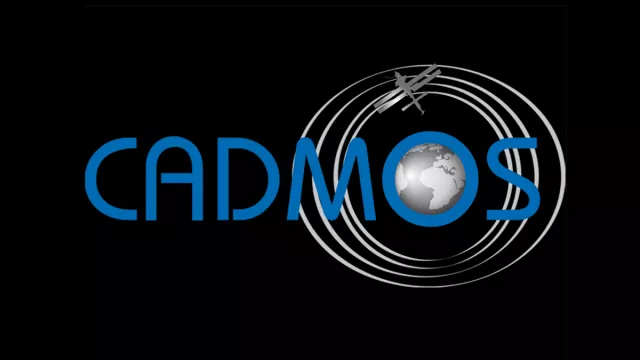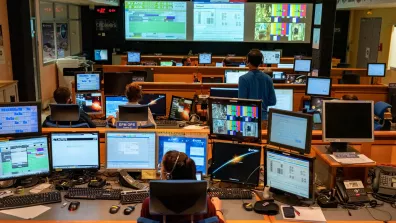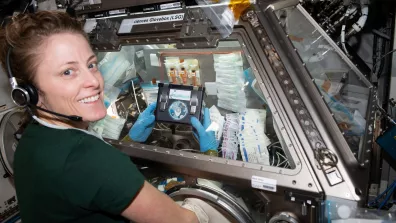Here on Earth, the CADMOS centre for the development of microgravity applications and space operations conceives, organizes and keeps track of microgravity science and technology experiments in space.
Key information
Key figures
- 40+ years’ expertise in human spaceflight
- 15 French astronaut missions
- 25 different scientific experiments every year
- 50-strong team
Key milestones
- 2026: First space mission of Sophie Adenot
- 2025: ACES atomic clock for PHARAO arrives on ISS
- 2024:
- New European Drawer Rack (EDR-2, operated by CADMOS) started up in Columbus module on ISS
- Euro Material Ageing experiment installed outside ISS
- 2023: Food Processor and Cerebral Ageing experiments flown to ISS
- 2021: Alpha Mission (Thomas Pesquet) with 12 CNES experiments
- 2016-2017: Proxima Mission (Thomas Pesquet) with 7 CNES experiments
- 2010: Two new CADMOS instruments on ISS: MARES and Cardiomed
- 2009: DECLIC instrument flown to ISS, start of 15 years of operations
- 2008: European Columbus module berthed to station and started up with European Physiology Module (EPM) operated by CADMOS
- 2001: Permanent crew presence on ISS
- 1998: Construction of International Space Station gets underway
- 1996: Claudie Haigneré’s Cassiopée mission on Mir space station
- 1993:
- Jean-Pierre Haigneré’s Altaïr mission on Mir space station
- Creation of CADMOS
Project in brief
CADMOS is the centre for the development of microgravity applications and space operations.
Crewed spaceflights aim to advance science and technology through experiments in microgravity conditions. Their goal is to observe physical, biological and physiological phenomena that are otherwise masked by gravity. For example, they might want to study how the cardiovascular system works, analyse the properties of certain fluids and materials or observe plant growth. The CADMOS laboratory at the Toulouse Space Centre plays a key role in this respect, helping scientists to prepare their experiments, monitoring them and collecting data. The main platforms that CADMOS scientists use for microgravity science are the International Space Station (ISS), the Airbus A300-Zero G and on occasions unmanned space capsules.
Created in 1993, CADMOS performs national and European experiments (for ESA), as well as participating in multilateral cooperation initiatives, notably with Russia and the United States. As a testament to its expertise, CADMOS is the centre performing the most experiments among the User Operations and Support Centres (USOCs) selected by ESA to help users operate equipment on the ISS.
Some examples of past or current recent experiments developed and/or operated by CADMOS on the International Space Station:
- ALI (Alice Like Insert): ALI is designed to study the transformation of fluids (SF6) from a liquid/vapour state to a monophase supercritical state and to deliver new insights into the piston effect. After a series of experiments in the ALICE facility on the Mir space station, the value of continuing such a research programme on the ISS became clear and was prioritized at programmatic level.
- Cardiolab: Cardiolab was a French-German contribution to the European Columbus science laboratory berthed to the ISS. Part of the European Physiology Module (EPM), it was dedicated to studying the human cardiovascular system and how it responds to microgravity conditions. Both flexible and scalable, Cardiolab was a suite of sensors and devices for stationary or ambulatory monitoring of physiological parameters and for applying stimuli to subjects.
- Cardiomed: Cardiomed was a French-Russian collaboration designed to keep a check on the health of Russian cosmonauts on board the ISS, consisting of 10 clinical protocols dedicated to monitoring their cardiovascular system. The unit’s five instruments measured parameters such as muscular activity of the myocardium (ECG), arterial blood pressure and flow, and calf muscle volume, both at rest and during physical activity on an exercise bike or when wearing the Chibis lower-body negative-pressure device.
- Cardiospace: The Cardiospace medical device developed jointly by France and China was sent aloft on the Chinese TianGong 2 orbital module in 2016. It focused chiefly on the effects of microgravity on micro- and macro-circulation, measured using a Doppler laser and ultrasound scanner.
- Cerebral Ageing: This experiment uses stem cells to study the ageing process in brain nerve cells at molecular and cellular scale, focusing equally on radiation, oxidative stress and microgravity effects.
- DECLIC (Dispositif d’Etudes de la Croissance et des Liquides Critiques): A joint CNES-NASA effort, DECLIC is a physics mini-laboratory housed inside a NASA science rack on the ISS since 2009. It operated three experiment inserts in turn for periods of three to six months: HTI (High Temperature Insert), ALI (Alice Like Insert) and DSI (Directional Solidification Insert). Experiments were monitored and controlled in real time from CADMOS at CNES, which verifies execution of research laboratories’ experiment plans.
- MatISS (Microbial Aerosol Tethering on Innovative Surfaces in the ISS): MatISS tests new innovative surfaces designed to prevent bacteria from gaining hold and proliferating. Developed for the Proxima mission in 2016, several versions have since flown on the ISS.
- FLUIDICS: this mini-centrifuge comprising three spheres representing satellite fuel tanks is designed to study fluid sloshing and capillary wave turbulence. The experiment was operated on the ISS from 2017 to 2023 and is set to be succeeded by a new linear version, FLUIDICS-L.
- Lumina: Lumina is an optical-fibre dosimeter measuring ionizing radiation inside the ISS since 2021.
-
EMA (Euro Material Ageing) combines two instruments:
- SESAME, to study in-flight ageing of new materials and advance knowledge of the space environment and its effects on materials
- IR COASTER, an infrared spectrometer to study direct exposure to UV and cosmic radiation and to the vacuum of space of organic molecules of interest to exobiology
These two experiments are attached to Airbus’ Bartolomeo platform outside the ISS.
- SEM: The aim of SEM (Special Event Meals) is to provide gastronomic-quality food for the ISS crew to mark special occasions like New Year, the arrival of new crew members or extravehicular activities. Dishes were chosen and prepared by Alain Ducasse Conseil (ADC), in accordance with a process validated by CNES and with Russian and American ISS certification rules. This collaboration between CNES and ADC seeks to create a complete range of tasty, health and nutritious special meals.
- ECHO is a tele-operable ultrasound scanner operated from Earth using motorized probe heads. It was developed by CNES in partnership with the Canadian Space Agency (CSA) and the European Space Agency (ESA) to:
- optimize the quality of scanner images and science results
- save crew time spent on scanner sessions
- shorten astronaut training time
Since the in-orbit commissioning of ECHO during Thomas Pesquet’s Proxima mission in 2017, it has been used regularly for scientific experiments operated by CADMOS on the ISS:
- Vacular Echo, a joint experiment of CNES and the Canadian Space Agency (CSA); 11 sessions were completed and it has now been replaced by Vascular Aging
- MYOTONES, a joint experiment of CNES and ESA; three sessions were completed
- CIPHER (Complement of Integrated Protocols for Human Exploration Research), a joint experiment with NASA to study 30 astronauts on long-duration missions (up to one year)
These experiments aim to gain new insights into the impacts of space missions on physiological changes to the cardiovascular, muscular and other systems.
- GRIP: This experiment is focused on motor learning when executing a range of handling tasks in microgravity conditions. It is part of ESA’s contribution to the ISS.
- METAL 3D PRINTER is a technology demonstration experiment designed to show that metal parts can be fabricated autonomously in space.
- PK-4 (Plasma Kristall-4) is a complex plasma laboratory inside the European Columbus module on the ISS.
CNES’s role
CADMOS is an operational structure of CNES that enables scientists to prepare and conduct a rich variety of experiments in microgravity, aboard the ISS, the Airbus Zero-G or automatic capsules.
It has been hosted by the Toulouse Space Centre since its inception in 1993, initially serving the needs of French missions aboard the Mir space station. But its long heritage dates back to monitoring of crewed spaceflights since the early eighties. It is today recognized for its operational and scientific expertise, for which it was made one of the USOCs (Users Support & Operational Centres) by ESA, designed to support ISS users.
CNES/CADMOS contacts
Project Leader/Manager for Crewed Spaceflights in development
Rémi Canton
E-mail: remi.canton at cnes.fr
Project Leader/Manager for Crewed Spaceflights in operation
Emmanuel Thulliez
E-mail: emmanuel.thulliez at cnes.fr




